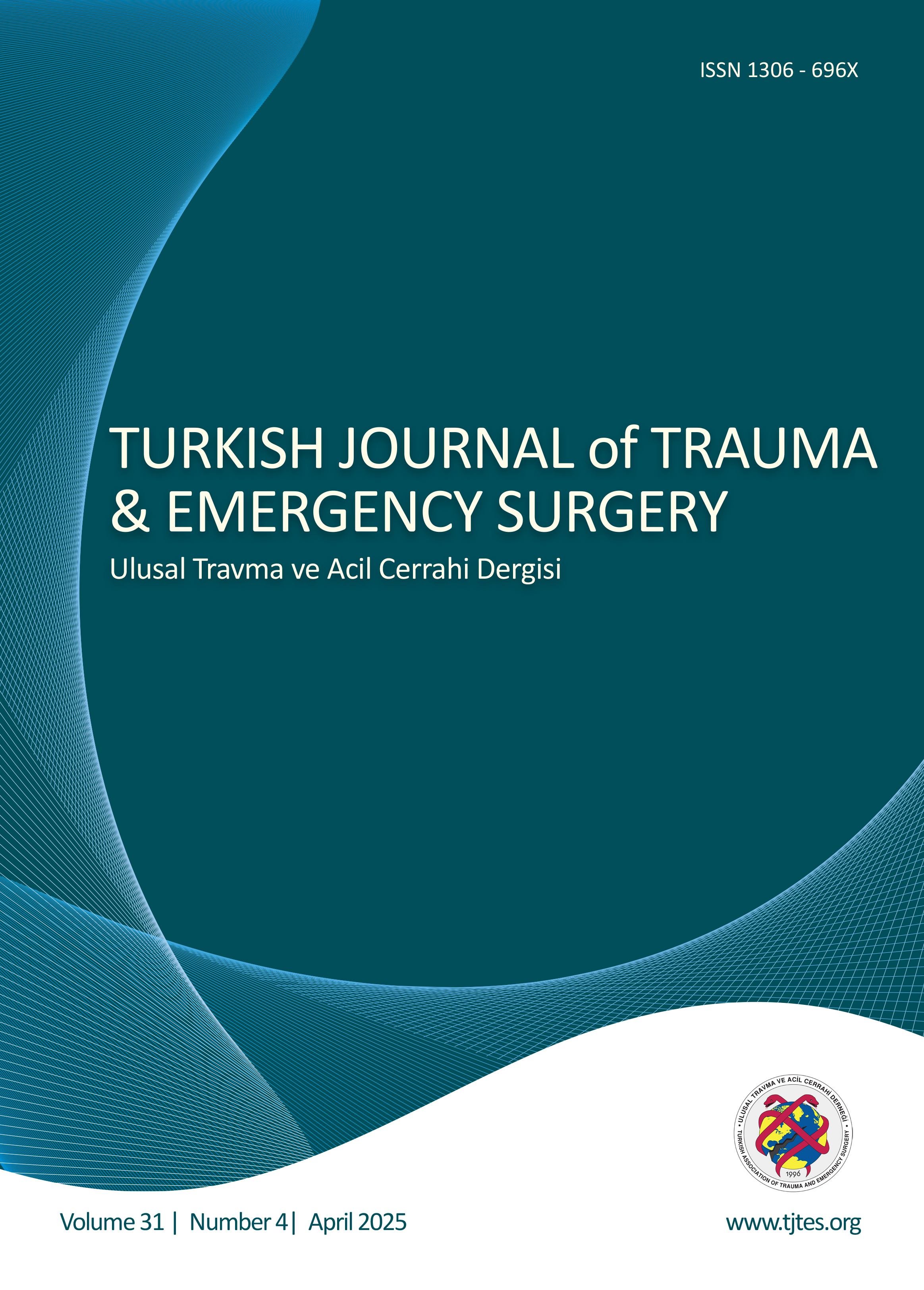Quick Search
Effects of decompressive craniectomy, hypertonic saline solution and mannitol on an experimental model of cerebral ischemia
Çağatay Çalıkoğlu1, Mehmet Hüseyin Akgül2, Osman Akgül3, Ayşe Karataş41Department Of Neurosurgery, Atatürk University Faculty Of Medicine, Erzurum2Department Of Neurosurgery, Seydişehir State Hospital, Konya
3Department Of Neuorosurgery, Düzce State Hospital, Düzce
4Department Of Neuorosurgery, Katip Çelebi University Faculty Of Medicine, İzmir
BACKGROUND: Cerebral ischemia is a cause of serious morbidity and mortality. Strategies that would protect cerebral tissue against ischemic injury are important. The present study aimed to evaluate effects of surgical and medical treatments, either alone or in combination, on infarction area in an experimental rat model of cerebral ischemia.
METHODS: Adult male Sprague-Dawley rats (n=30) were divided into 6 groups, each including 5 experimental animals. Cerebral ischemia was created by right common carotid artery occlusion (CCAO) under anesthesia. Decompressive craniectomy (DC) was performed in the relevant groups at the 12th hour following CCAO, whereas medical treatments were performed in the relevant groups at the 1st, 12th, and 24th hours following CCAO. After CCAO, the control group received 1 mL/kg physiological saline, hypertonic saline (HS) group received 3% hypertonic saline (1 mL/kg), and mannitol (MAN) group received 20% mannitol (1 g/kg). While only DC was performed following CCAO in the DC group, DC+HS group underwent DC together with hypertonic saline treatment and DC+MAN group underwent DC together with mannitol treatment. The rats were decapitated at the end of the 24th hour following ischemia. Cerebral sections were stained with 2% 2,3,5-triphenyltetrazolium chloride (TTC). The ratio of infarction area to the total area of section was calculated as percentage.
RESULTS: Mean infarction areas were 27.9% in the control group, 13.7% in the HS group, 15.1% in the MAN group, 10.6% in the DC group, 8.1% in the DC+HS group, and 9.7% in the DC+MAN group. Mean infarction areas were significantly lower in all groups than in the control group. While the mean infarction area did not differ between the HS and MAN groups, it was lower in the groups undergoing DC as compared to these two groups. The best outcome was observed in the DC+HS group.
CONCLUSION: Both medical and surgical treatments were effective in decreasing cerebral ischemic infarction. There was no difference between medical treatments groups in terms of efficacy, whereas DC led to a substantial decrease in ischemic infarction volume as compared with the medical treatment groups. Combined treatment approaches performed to decrease infarction volume also resulted in favorable outcomes.
Dekompresif kraniektomi, hipertonik salin ve mannitolün deneysel serebral iskemi üzerine etkilerinin karşılaştırılması
Çağatay Çalıkoğlu1, Mehmet Hüseyin Akgül2, Osman Akgül3, Ayşe Karataş41Atatürk Üniversitesi Tıp Fakültesi, Beyin Ve Sinir Cerrahisi Anabilim Dalı, Erzurum2Seydişehir Devlet Hastanesi, Beyin Ve Sinir Cerrahisi Kliniği, Konya
3Düzce Devlet Hastanesi, Beyin Ve Sinir Cerrahisi Kliniği, Düzce
4Katip Çelebi Üniversitesi Tıp Fakültesi, Beyin Ve Sinir Cerrahisi Kliniği, İzmir
AMAÇ: Serebral iskemi son derece önemli ve ciddi bir mortalite ve morbidite sebebidir. Serebral dokuyu iskemik zedelenmenin oluşturacağı hasardan korumak için seçilecek yöntem son derece önemlidir. Bu çalışmada kullanılan medikal ve cerrahi tedavi yöntemleri deneysel fare serebral iskemi modeli ile karşılaştırıldı, tek başına veya kombine uygulamalarında etki düzeyleri araştırıldı.
GEREÇ VE YÖNTEM: Erişkin erkek Sprague-Dawley sıçanlar (n=30) altı gruba ayrıldı, sağ kommon karotis arter oklüzyonu ile serebral enfarkt oluşturuldu. Bir gruba iskemiden 12 saat sonra Dekompressif kraniectomi (DC) uygulandı. Diğer bir gruba ise iskemi sonrası 1, 12 va 24. saatlerde medikal tedavi verildi. Kontrol grubuna serum fizyolojik verilirken, bir gruba %3 hipertonik saline, diğer bir gruba %20 mannitol tedavisi. Sadece kraniyektom yapılanlar dekompressif kraniektomi grubu (DC), DC+HS grubu ise DC ve hipertonik salin verilenlerden oluştu. DC+MAN ise DC ve mannitol beraber verilen grubu olurturdu. Sıçanlar 24. saatin sonunda dekapite edildi, beyinleri alınarak patolojik olarak incelendi ve iskemi sahaları hesaplanarak tedaviye yanıtları değerlendirildi.
BULGULAR: Kontrol grubunda ortalama enfarkt alanı %27.9, HS grubunda %13.7, MAN grubunda %15.1, DC grubunda %10.6, DC+HS grubunda %8.1, ve DC%+MAN %9.7. Ortalama enfarkt alanları hemen tüm gruplarda kontrol grubuna gore düşük görüldü, HS ve MAN grupları arasında fark bulunamadı, DC grubunda bu iki gruba göre daha iyi sonuç elde edildi fakat en iyi sonuçlar DC+MAN grubunda tespit edildi.
TARTIŞMA: Serebral iskemik enfarkt tedavisinde hem medikal hem cerrahi etkili yöntemlerdir. Medikal tedavi yöntemleri arasında fark bulunamadı, halbuki cerrahi tedavi grubunda, medikal tedavi grubuna göre daha iyi sonuç elde edildi. Kombine tedavide diğerlerine göre en iyi sonuç alındı. Bu sonuçlar iskemik beyin zedelenmesinde en iy sonucun cerrahi ve medikal tedavi kombinasyonu olduğunu göstermektedir.
Manuscript Language: English



